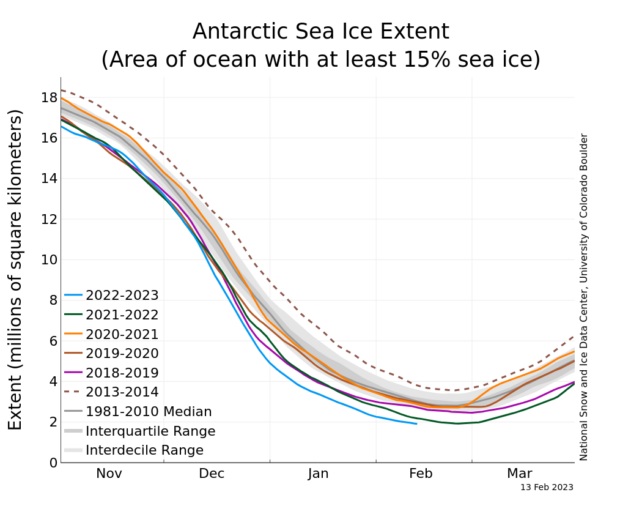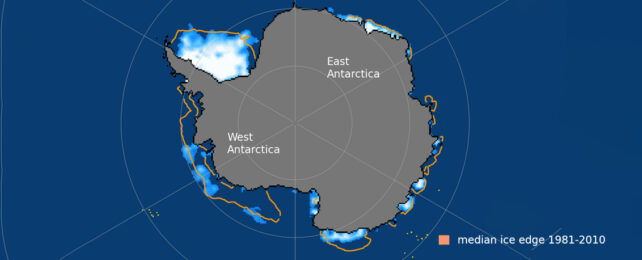The Antarctic Ocean area covered by ice has shrunk to a record low, exposing the thicker ice shelves buttressing Antarctica's ground ice sheet to waves and warmer temperatures, scientists reported Thursday.
The National Snow and Ice Data Center in the United States said Antarctica's sea ice fell to 1.91 million square kilometers (737,000 square miles) this week, the lowest extent since records began in 1979.
The previous all-time low was set last year.
"With a couple more weeks likely left in the melt season, the extent is expected to drop further before reaching its annual minimum," the NSIDC said in a statement.

Melting sea ice has no discernible impact on sea levels because the ice is already in ocean water.
But the sea ice rings Antarctica's massive ice shelves, the extensions of the freshwater glaciers that threaten catastrophic sea level rise over centuries if they continue melting as global temperatures rise.
The NSIDC said "much of the Antarctic coast" has water that is now without ice, "exposing the ice shelves that fringe the ice sheet to wave action and warmer conditions".
The Antarctic cycle undergoes significant annual variations during its summers of thawing and winters of freezing, and the continent has not experienced the rapid melting of the past four decades that plague the ice sheets of Greenland and the Arctic due to global warming.
But the high melt rate since 2016 raises concerns that a significant downward trend may be taking hold.
Melting of the sea ice is problematic because it helps accelerate global warming.
When white sea ice – which bounces up to 90 percent of the Sun's energy back into space – is replaced by dark, unfrozen sea, the water absorbs a similar percentage of the Sun's heat instead.
The previous record was set in February last year, when the area of ice floating on the Antarctic Ocean fell below two million square kilometers for the first time.
Last week, Europe's Copernicus climate monitor (C3s) said that the January ice extent was already at a record low.
Globally, last year was the fifth or sixth warmest on record despite the cooling influence of a natural La Nina weather pattern.
